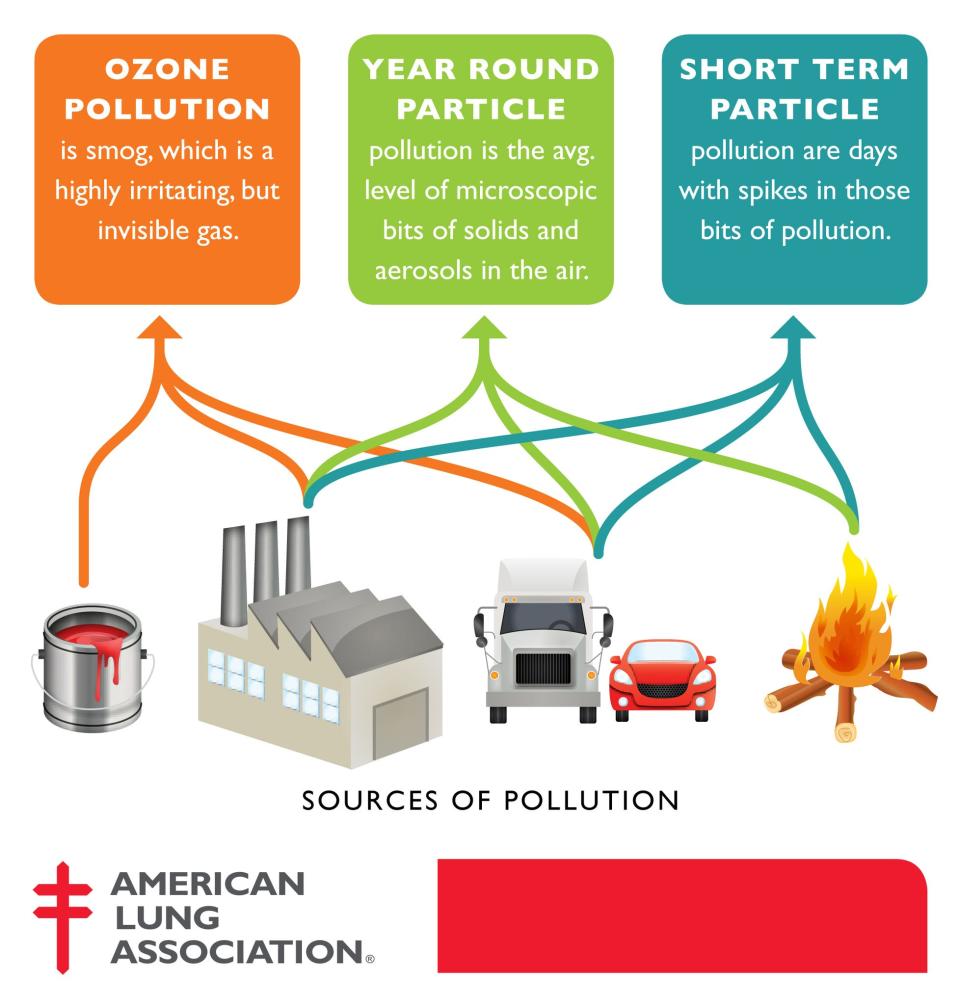For the fifth year in a row, Shelby County's air quality fails in one of three categories
Shelby County has received an "F" grade for one of the air quality sections surveyed by the American Lung Association.
This is the fifth year in a row the county has failed to meet the organization's standard for safe ozone levels. Shelby County is also the only county in Tennessee to have received an "F" grade for high ozone, with none of the surveyed counties returning a failing grade.
The American Lung Association's State of the Air report is an annual report that grades counties across the country in three categories relating to air quality. The report utilizes Environmental Protection Agency data but delivers a more robust analysis, placing the state of a county's air quality under more scrutiny than is mandated by the Clean Air Act.
COAL ASH DISPOSAL: Did TVA hide its plans to dispose of coal ash in Memphis? Environmental groups say emails show it
HOUSING POLICY: How a Tennessee housing policy concentrates poverty, denies opportunity
The EPA judges air quality based on each county's four worst air quality days each year, which are then averaged over three years – any other day is ignored in its analyses. The State of the Air report views every day's air quality, placing them into categories based on the danger the air poses to people.
The report provides grades in three categories. Shelby County passed its short and long-term particle pollution sections – which cause the air to appear hazy and cause medical concerns when levels are high – and failed with its high ozone days – which are commonly viewed as days with lots of smog present.
En route to having too many high-ozone days, Shelby County sported 11 "orange days," which is how the report categorizes ozone that is potentially harmful to sensitive groups.

Shelby County leads in every category of at-risk populations and, according to Shannon Baker, the American Lung Association's director of advocacy for Kentucky and Tennessee, a single day of bad air quality can be deadly to some groups.
"One bad air day can be lethal for certain individuals – bad air days put everyone at risk," Baker said. "But especially children, whose respiratory systems are continuing to develop, older adults, pregnant people, people who exercise or work outside, and people living with like chronic respiratory diseases like asthma. And the fact really, is that poor air quality can even cause lung cancer."
Among other Tennessee counties included in the report, Knox County scored a "B," with one "orange day." Davidson County, home to Nashville, scored a "D," with 5 "orange days" and 1 "red day."
Baker said that "F" grade shouldn't be the only thing looked at, though. When looking at the last six reports, 2022 has had the fewest high ozone days since 2017, and the weighted average – which is how grades are distributed – is down 2.5 points from 2020.
That decrease could be a byproduct of an increase in trees being planted around the county. Researchers from the University of Louisville and Nature Conservancy found that trees within 300 yards of pollutants, such as vehicles, filter out up to a third of all fine particle pollutants.
In contrast to the better ozone trend is an increase in short and long-term particle pollution in Shelby County. Since 2018, dangerous short-term pollution days have grown 67% more frequent, and dangerous long-term pollution days have become 15% more frequent since 2019.
Even with those increases, Shelby County is still considered "passing" in those categories – and it would take a serious and long-lasting pollution event for Shelby County to fail in upcoming years.
"In this year’s SOTA report, of the 490 counties for which comparisons with last year's values can be made, none showed a change large enough to go from 8.7 to 12.0 micrograms per cubic meter, and the average absolute change from last year’s report to the current one was only about 0.4 micrograms per cubic meter," Baker said. "The conclusion, therefore, is that any kind of change in annual average concentrations of fine particle pollution from 8.7 to something exceeding 12 micrograms per cubic meter is extremely unlikely. For Shelby County to be pushed to that threshold would take a serious and long-lasting air pollution event, and in close proximity to the air pollution monitoring equipment."
But passing two of the three categories does not clear Shelby County's air as safe. Baker emphasized the fact that for the most at-risk populations, a single bad day can be lethal. She, and the report, also point out that low-income communities and communities of color shoulder the most intense effects of air pollution.
"If you're not personally feeling the threats are the consequence of breathing unhealthy air yourself, think about little kids with developing respiratory systems," she said. "Think about grandparents – think about the people you know who have lung disease – and come back to that message. One bad air day can be one too many for someone else."
Lucas Finton is a news reporter with The Commercial Appeal. He can be reached at Lucas.Finton@commercialappeal.com and followed on Twitter @LucasFinton.
This article originally appeared on Memphis Commercial Appeal: Shelby County's air fails for fifth year in a row in one category

